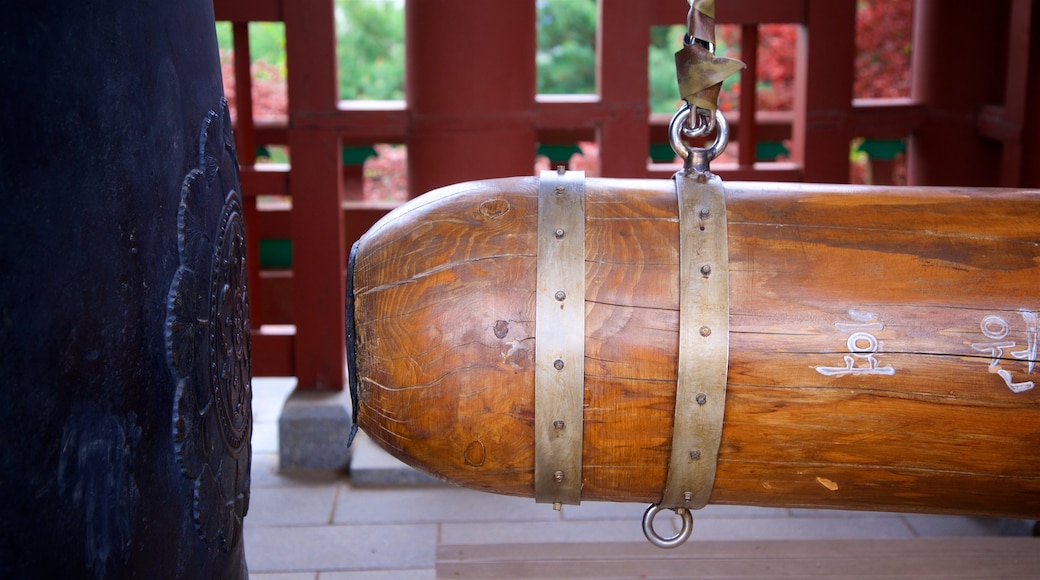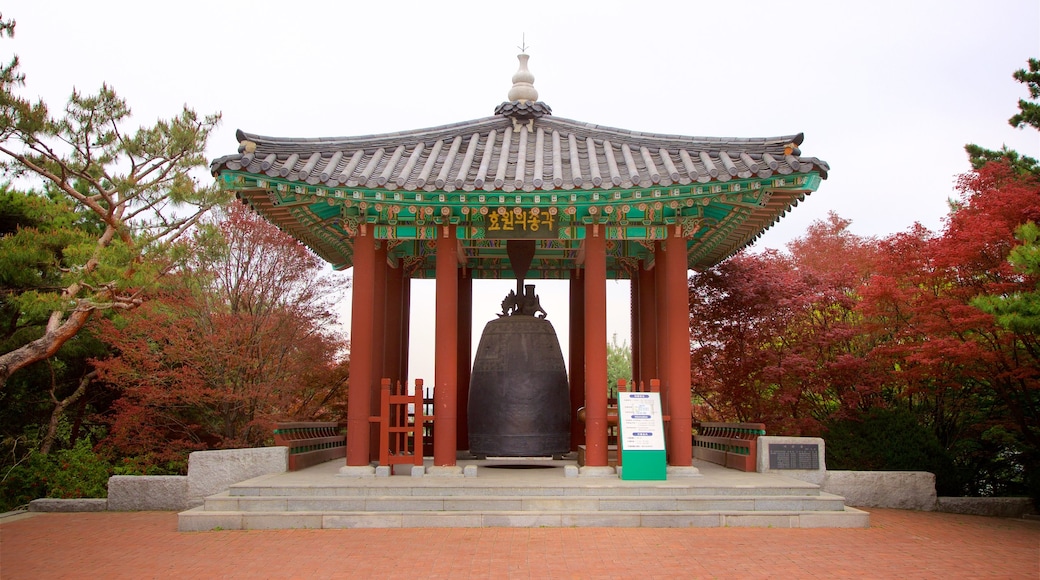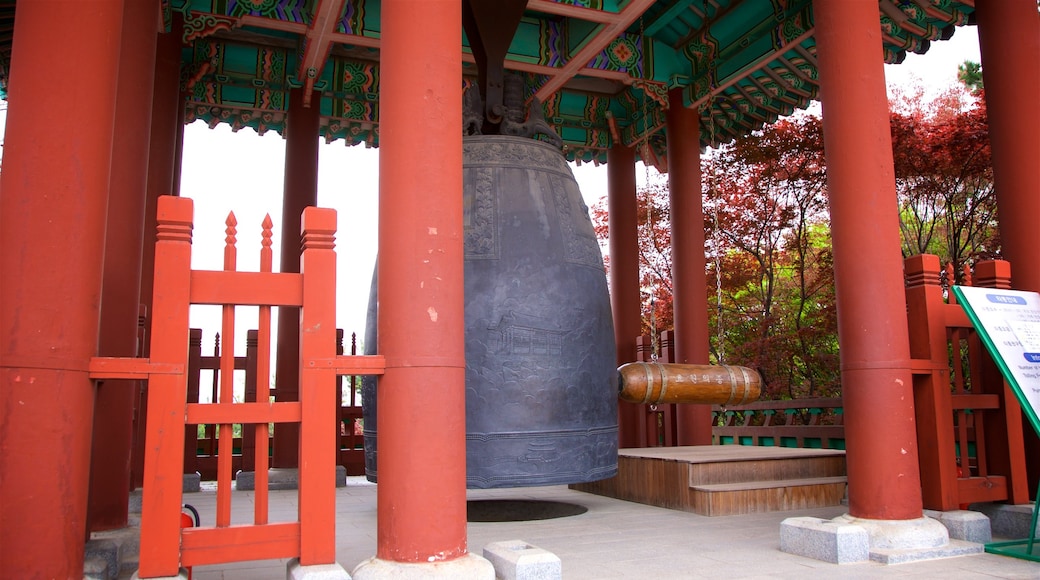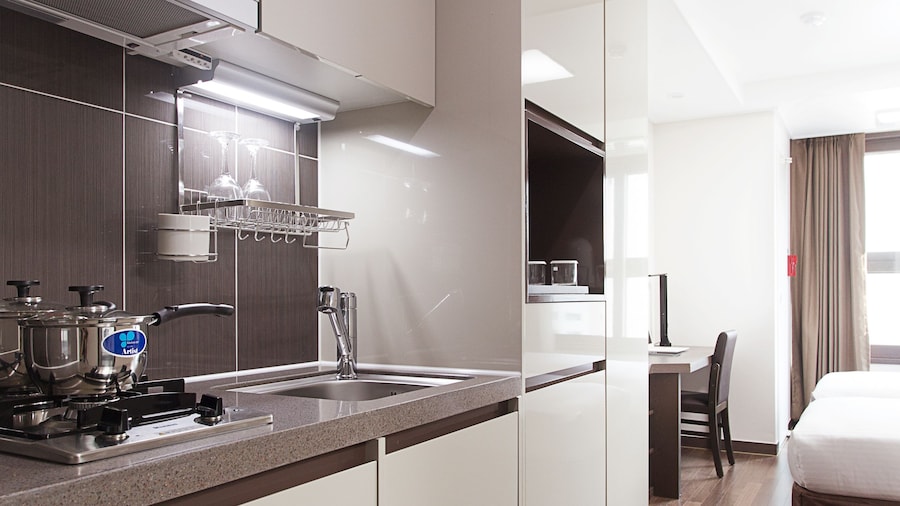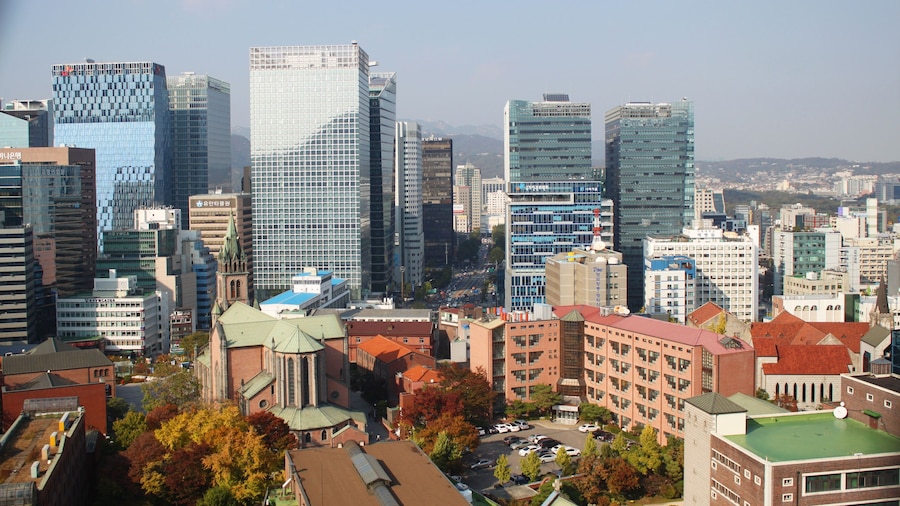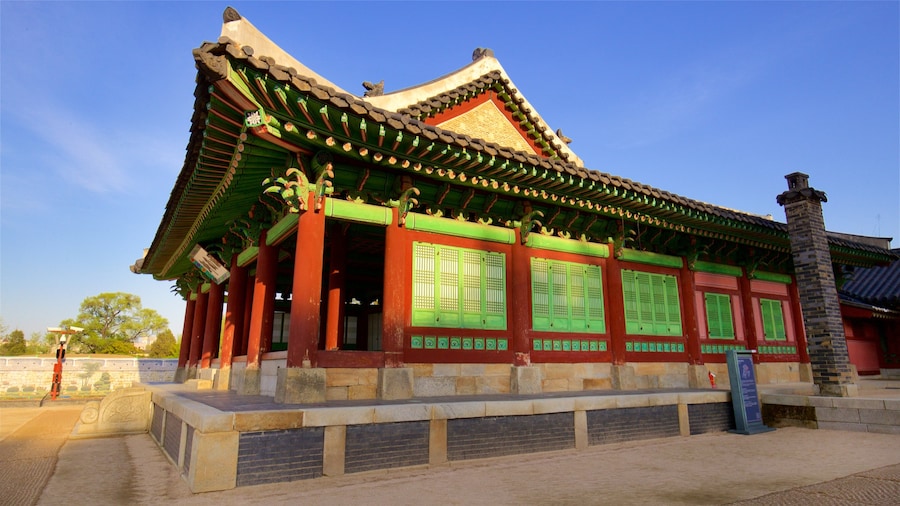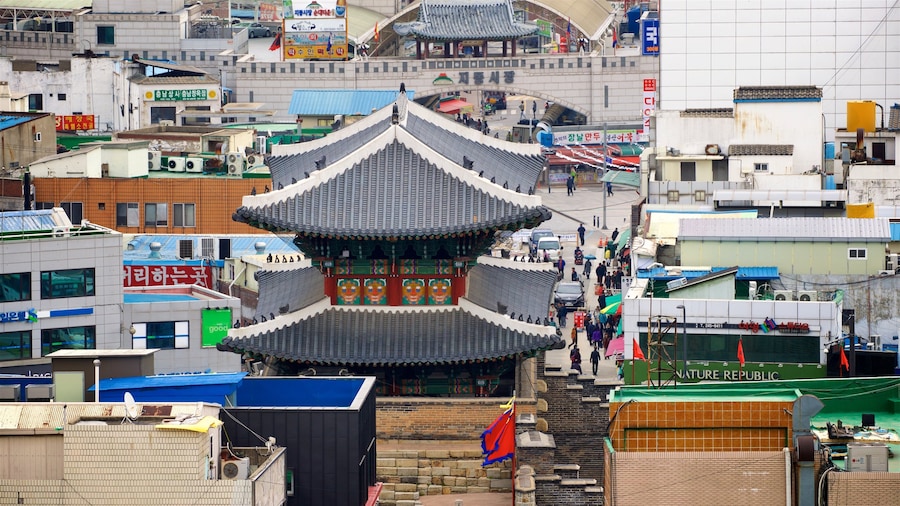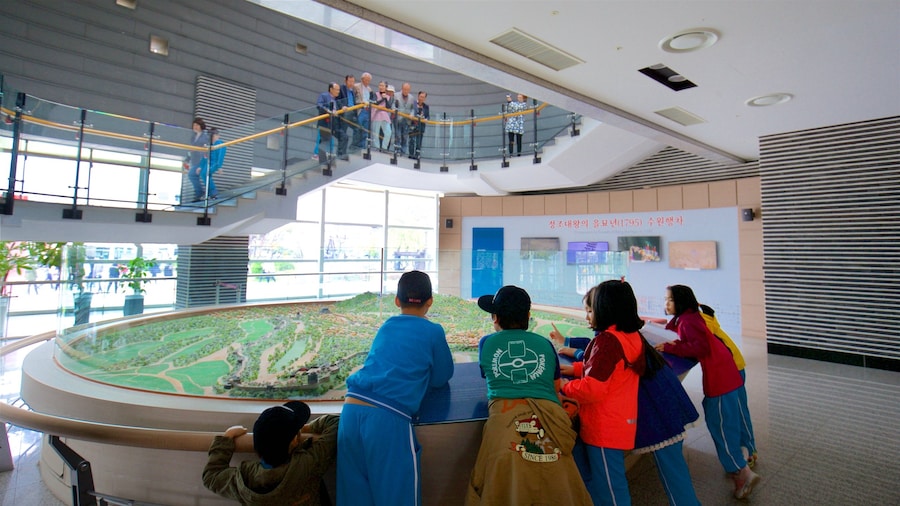Climb to the top of Mount Paldalsan to inspect this monument dedicated to Suwon’s old king. Ring the enormous bell that hangs in the pavilion.
Hyowon’s Bell is a fitting monument to Suwon’s 18th-century king and his father. The monument overlooks the sprawling castle and reliquary that King Jeongjo created to honor his father, Prince Sado Seja. Admire the Joseon Dynasty-era architecture of the pavilion that protects Hyowon’s Bell and take part in its ancient tradition.
Make your way up the hillside enclosed by the walls of Hwaseong Fortress. Rising up on the western side of the old fort walls, Mount Paldalsan provided a tactical advantage for King Jeongjo’s immense military-style fortress. Follow the old fort walls to the summit of the hill. Note that the fort walls decrease in height as you climb higher. Hilltops historically were used as watchtowers for the fortress. Mount Paldalsan was used historically to oversee the fort’s security.
At the top of the hill, you’ll find a pavilion built in the traditional Korean style. The tiled roof is supported by a series of red-painted beams, which give the pavilion an open ambiance. See the enormous bell that hangs in the center of the pavilion. Hyowon’s Bell is 11.5 feet (3.5 meters) tall and 7.2 feet (2.2 meters) in diameter. Take part in a local tradition and use the wooden mallet to strike the bell three times. According to tradition, the first strike represents gratitude to your parents the second strike brings health and harmony to your family and the third strike will bring you good fortune. Listen to the long and resonant tone of the 12.5-ton (11.3-tonne) bell as it rings out across the castle complex. Look out across the old and new sections of the city from the hilltop pavilion.
Hyowon’s Bell is located on the western side of Hwaseong Fortress. There is an admission fee to visit this part of the fort, as well as a small fee to ring the bell. The expansive hilltop views and intriguing history make Hyowon’s Bell a highlight of the fortress complex. Visit any time of the year during the fort’s opening hours.
